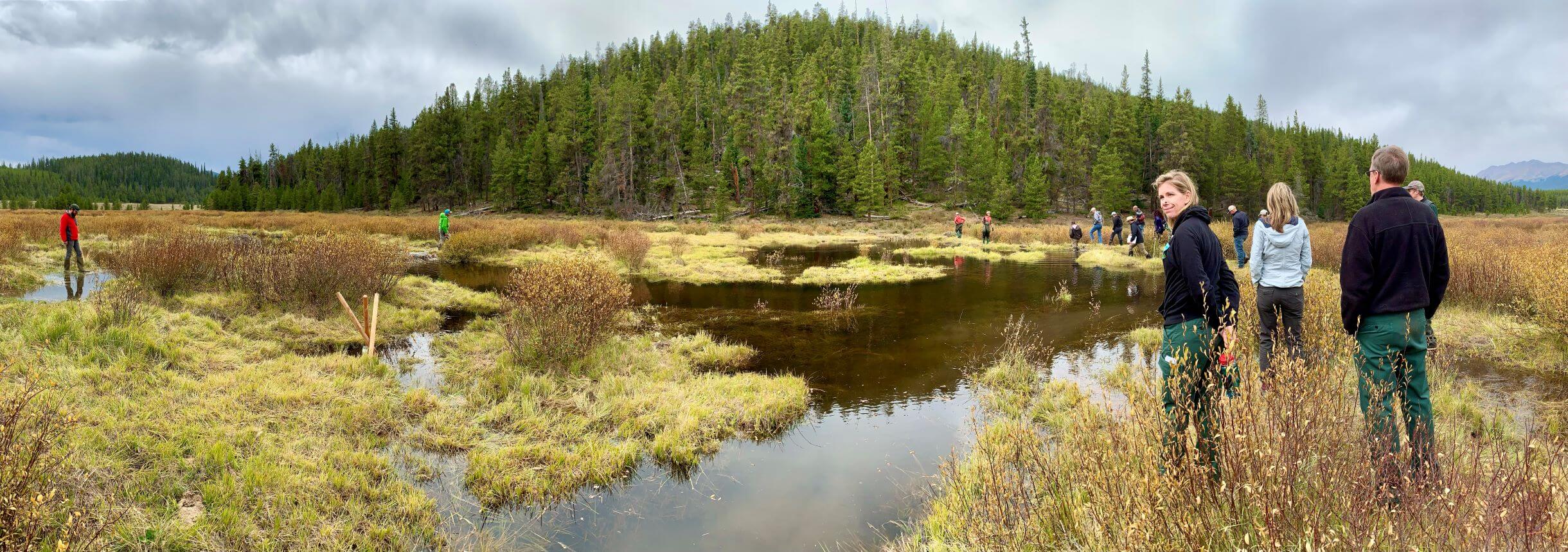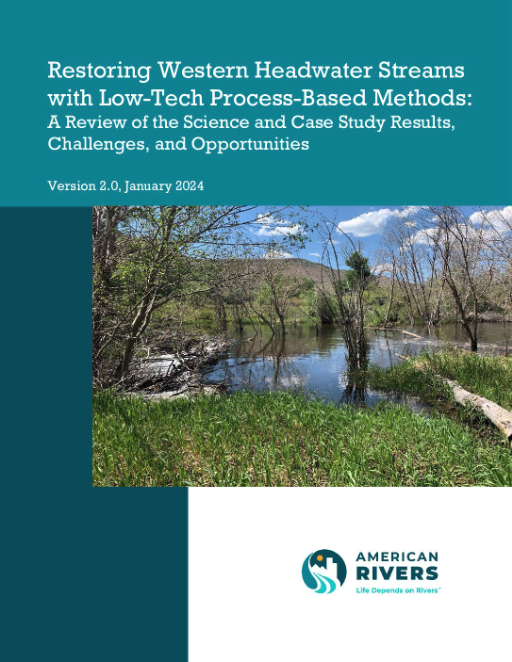State of the Science on Restoring Western Headwater Mountain Streams

Low-tech process based restoration (LTPBR) is a subset of process-based restoration (PBR) that seeks to re-establish natural stream processes by reconnecting incised streams with their floodplains and adjacent wetlands so that more frequent inundation of the floodplain occurs. Over the last decade, interest in designing and implementing LTPBR projects has grown considerably, and projects have been implemented across the west. This report reviews both published and unpublished research, case studies and project information on the effects of restoring incised and degraded headwater streams in Colorado and other western states with LTPBR.
LTPBR projects involve the use of simple, temporary, hand-built wood and rock structures that mimic natural beaver structures, acting as speed bumps that capture sediments to aggrade the stream. LTPBR approaches are substantially less expensive than form-based stream restoration approaches that employ heavy equipment.
Research and monitoring on LTPBR pilot projects have found a number of environmental and ecosystem service benefits. Benefits of LTPBR projects include:
- Drought and flood resilience: Studies indicate that healthy natural stream systems and restored headwater floodplains and wetlands recharge local aquifers. Reconnected floodplains enable infiltration of runoff into soils and wetlands, providing natural storage during spring runoff that can be slowly released to streams during the summer months. Healthy connected floodplains also help delay downstream flood peaks.
- Wildfire resilience: A 2020 study of large western US wildfires found that riparian vegetation around beaver complexes had a three times greater rate of survival than around stream segments without beavers.
- Improved habitat: By enhancing wetlands, LTPBR and beaver dams enhance important terrestrial habitat, and have also been shown to enhance fisheries
- Reduced Sedimentation: A study in England monitored 13 beaver ponds built from beavers re-introduced to a controlled 4.5-acre site. They determined that over the four years of monitoring the beaver ponds trapped on average 7.8 tons of sediment, totaling 101.5 tons. The authors concluded beaver ponds may help mitigate the downstream impacts of erosion and nonpoint source pollution.
- Increased water quality: Beaver dams have been shown to retain sediment and nutrients, as well as heavy metals, reducing downstream pollution levels.
- Increased forage: A 2018 study of LTPBR projects in Colorado, Oregon and Nevada showed that the projects increased vegetation productivity and extended it longer into the year. The authors noted that increased soil moisture due to the projects enabled vegetation to keep growing well during periods of low precipitation.

Research conducted for the report found ample evidence for many benefits from LTPBR. However, additional research is needed to better understand the hydrologic effects of LTPBR projects and beavers, including their potential to increase late-season flows and increase evaporation and water use by wetland vegetation. Existing research on the hydrologic effects has found the following:
- Key factors influencing the degree of LTPBR and beaver impacts on late-season flows include the extent of floodplain inundation and the length of time the inundation is sustained, as well as the porosity of structures.
- In regard to the potential for LTPBR to cause higher late-season flows and lower flows when a LTPBR project is first installed, one review found that small LTPBR projects tend not to have observable effects on streamflow, while larger projects can attenuate runoff and increase baseflows.
- A 2020 Montana study found that three years after the installation of a LTPBR project, the riparian vegetation had increased by ~25%, which resulted in a 0.7gpm increase in ET per structure. This small amount of decreased flow (0.0015cfs) was well below an amount that could be detected by a stream gage
Despite the documented benefits and low cost of LTPBR projects, challenges are impeding scaling up these projects. The social barriers to LTPBR and beavers are the largest challenges to solve. These include the potential impacts to human infrastructure from beaver dams, such as road and irrigation infrastructure flooding. This has stimulated the development of numerous solutions for preventing beaver from blocking water conveyances and ensuring sufficient water passage through beaver dams to prevent flooding problems. Additionally, more research is needed to understand the hydrologic effects of LTPBR projects and beaver complexes, including potential benefits to late-season flows and potential water rights impacts that can be avoided or mitigated. Demonstration projects in different types of stream systems and elevations are needed to provide more scientific understanding of these effects. Consulting with local stakeholders prior to developing an LTPBR project, carefully choosing location and project design, and ensuring compliance with any permitting requirements, can help overcome these challenges and enhance the chances for project success.
This report was written for American Rivers by Jackie Corday with Corday Natural Resource Consulting.

